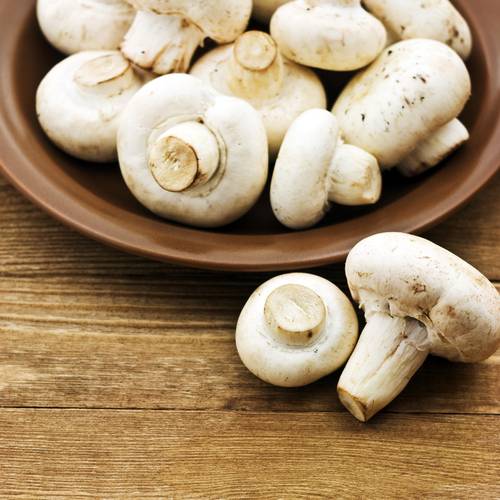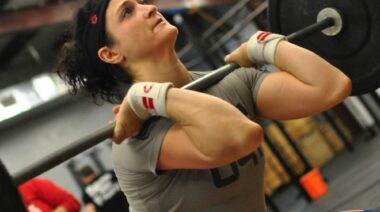This week, in part three of my series on the ins and outs of vitamins, we will look at the antioxidant, energy-producing power station known as vitamin B2.
What Does Vitamin B2 (Riboflavin) Do?
Vitamin B2, also known as riboflavin is the second of eight B vitamins. The word “flavin” comes from the Latin “flavus,” meaning yellow. So, vitamin B2 gets its name from its color. This can be seen when high supplementation occurs, as your urine becomes bright yellow as the excess riboflavin is excreted.
While helping to produce energy is one of its uses, riboflavin is also an antioxidant working to rid the body of free radicals. Riboflavin is also needed to help the body change vitamin B6 and folate into usable forms. Other important functions include body growth and red blood cell production.
Riboflavin takes the form of flavin adenine dinucleotide (FAD) or flavin mononucleotide (FMN) when it is active in the body’s energy pathways. When it converts into these two forms it allows oxygen-based energy production to occur by attaching to protein enzymes. When FAD and FMN attach to proteins they are often called flavoproteins. Flavoproteins can be found all through the body but are mainly based where oxygen-based energy production is needed, for example the heart and skeletal muscle.
Among many of FAD’s roles one is to be a cofactor for an enzyme called methylenetetrahydrofolate reductase (MTHFR). Being a cofactor means FAD is required to be present for the creation of MTHFR. This is important because MTHFR is involved in the breakdown of homocysteine, and high levels of homocysteine have been linked to an increased risk of heart disease.
Energy production and metabolic processes in the body require the use of oxygen, however oxygen containing molecules can be highly reactive and can cause harm to many structures in the body, including blood vessel linings and joint tissues. A small protein-like molecule called glutathione helps to prevent this damage. Glutathione must be constantly recycled and vitamin B2 allows this to happen, as it is a cofactor for the enzyme glutathione reductase, which reduces the oxidized form of glutathione back to its reduced version.
Vitamin B2 in its FAD form is also used by an enzyme called kynurenine mono-oxygenase to convert the amino acid tryptophan into vitamin B3, otherwise known as niacin.
Foods Rich in Vitamin B2
The majority of healthy people who eat a well-balanced diet will get enough riboflavin. The best sources of riboflavin include brewer’s yeast, almonds, organ meats, whole grains, wheat germ, wild rice, mushrooms, soybeans, milk, yogurt, eggs, broccoli, Brussels sprouts, and spinach. Flours and cereals are often fortified with riboflavin.

Riboflavin is destroyed by light, so food should be stored away from light to protect its riboflavin content. While riboflavin is not destroyed by heat, it can be lost in water when foods are boiled or soaked. Riboflavin is also best absorbed when taken between meals.
Vitamin B2 Synergistic Nutrients
Nutrients that can help with absorption of vitamin B2 are vitamins A, B1, B3, B5, B6, and B12, as well as biotin, chromium, copper, cysteine, folate, glutathione, iron, magnesium, phosphate, potassium, and zinc.
Vitamin B2 Deficiency
Riboflavin deficiency is quite common if dietary intake is lacking, as it is continuously excreted in the urine. It should be noted that riboflavin deficiency is always accompanied by a deficiency of other vitamins.
Two types of riboflavin deficiencies exist:
- Primary riboflavin deficiency: When the person’s diet is poor in vitamin B2
- Secondary riboflavin deficiency: When there is another reason for the deficiency. It could be a result of conditions that affect absorption in the intestines, the body not being able to use the vitamin, or an increase in the excretion of the vitamin.
Signs and symptoms of riboflavin deficiency:
- Angular cheilitis – cracks at the corners of the mouth
- Cracked lips
- Dry skin
- Inflammation of the lining of the mouth and tongue
- Mouth ulcers
- Red lips
- Sore throat
- Iron-deficiency anaemia
- Eyes may be sensitive to bright light, they may also be itchy, watery and/or bloodshot
Vitamin B2 Side Effects
There is no known toxicity to riboflavin. Because riboflavin is a water-soluble vitamin, excess amounts are easily excreted by the body in the urine. Possible reactions to very high doses may include itching, numbness, burning or prickling sensations, and sensitivity to light.
Vitamin B2 Researched Uses
Preventing migraine headaches: High doses of riboflavin, around 400 mg/day, seem to drastically reduce the number of migraine headache attacks. The pain and duration of the headache, though, does not seem to be affected by supplementation.
Preventing cataracts: Vitamin B2, along with other nutrients, is important for normal vision. According to early research findings, riboflavin might help prevent cataracts. In one double blind, placebo-controlled study, people who took a niacin and riboflavin supplement had fewer cataracts than people who took other vitamins and nutrients. However, researchers don’t know whether that was due to riboflavin, niacin, or the combination of the two. Continued research is needed to evaluate if riboflavin can really help in preventing cataracts.
Vitamin B2 Recommended Intake
It is recommended to get the following amounts of vitamin B2 per day:
- Infants: 0.3mg up to 6 months and 0.4mg up to 7 months
- Children: 0.5mg a day up to 3 years, 0.6mg a day up to 8 years, and 0.9mg a day up to 13 years
- Adolescents and adults: 1.3mg a day for males 14 and older, 1mg a day for females 14 years and older
- Women who are pregnant or breastfeeding: Pregnant women will need 1.4mg and breastfeeding women will need more, around 1.6mg a day
Continue by reading the other articles in the series ABCs of Vitamins:
- The ABCs of Vitamins: Vitamin A
- The ABCs of Vitamins: Vitamin B1 (Thiamine)
- The ABCs of Vitamins: Vitamin B3 (Niacin)
- The ABCs of Vitamins: Vitamin B5 (Pantothenic Acid)
- The ABCs of Vitamins: Vitamin B6 (Pyridoxine)
- The ABCs of Vitamins: Vitamin B7 (Biotin)
- The ABCs of Vitamins: Vitamin B9 (Folate or Folic Acid)
References:
1. Osiecki, Henry , The Nutrient Bible 8th Edition, Bio Concepts Pub, Kelvin Grove QLD
2. “riboflavin -B2.” The World’s Healthiest Foods.
3. “Riboflavin (Vitamin B2).” Medline Plus. November 2012.
4. “Vitamin B2 (Riboflavin).” University of Maryland Medical Center. December 2011.
5. Skalka HW, Prchal JT. Cataracts and riboflavin deficiency. Am J Clin Nutr 1981;34:861-3.
6. Sándor PS, Afra J, Ambrosini A, Schoenen J. Prophylactic treatment of migraine with beta-blockers and riboflavin: differential effects on the intensity dependence of auditory evoked cortical potentials. Headache. 2000 Jan;40(1):30-5
7. Goodrich RP, et.al, Chapter 5:“The Antiviral and Antibacterial Properties of Riboflavin and Light: Applications to Blood Safety and Transfusion Medicine.”Flavins: Photochemistry and Photobiology, Vol. 6, 2006, Royal Society of Chemistry; Cambridge, United Kingdom. E Silva and AM Edwards, editors.
Photos courtesy of Shutterstock.






